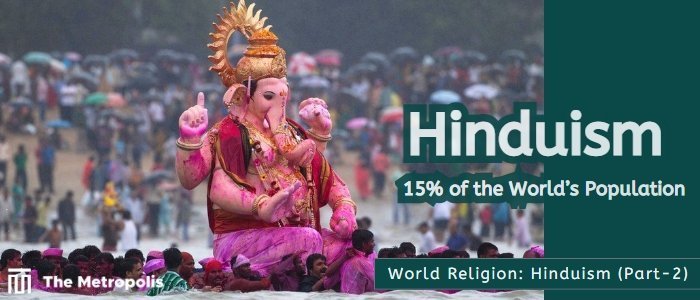Anjum Anam –
Indian Sanatan Dharma or Hinduism is a very diverse religion. Originating and adhered to Indian Subcontinent, here different peoples have different folkloric mythological stories from region to region. This religion is a combination of multiple religious beliefs of the Indian subcontinent.
Vedic Cosmology
According to literature, Hindu cosmology is the explanation of the universe, including its states of matter, cycles within time, physical makeup, and impacts on living things. The concept of a creator who permits the world to exist and take shape is entwined with Hindu cosmology as well.
Vedic literature develops the idea of a Loka. A place or position of religious or psychological interest with a unique worth or function is referred to as Loka in the Veda, which means more than just place or world. The Trailokya or Triple World — three realms made up of the earth, the atmosphere or sky, and the heavens — is the most typical cosmological interpretation of Lokas in the Vedas.
According to Brahma Purana (Mythology), our living galaxy is called Brahmanda. With a solid shell, it encircles all the lokas and oceans.
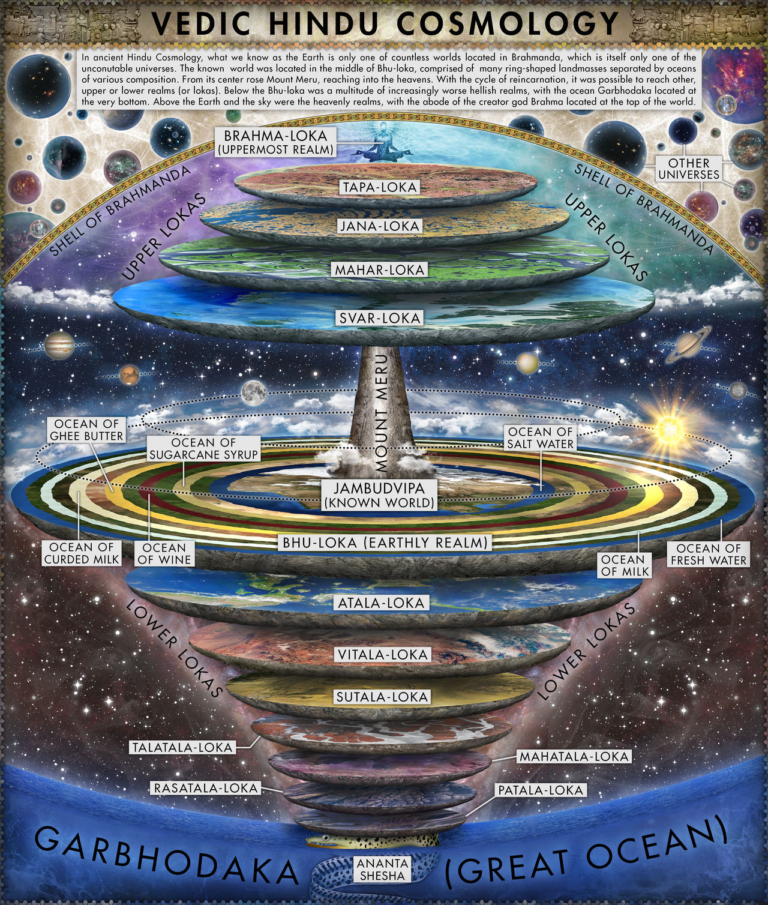
The 7 worlds (Loka) and including above the earth:
-
Brahma (Satya) Loka – Abode of God Brahma and Goddess Saraswati. It is in the sky.
-
Tapa Loka – Abode of the ascetic deity and Devdas-Devadasis
-
Jana Loka – Abode of Brahma’s children
-
Mahar Loka – Abode of Muni Rishis
-
Swarga Loka/Svar Loka – Abode of the god Indra, his fellow Gods and Goddesses, and Apsaras. Abode of pious souls.
-
Bhuvas Loka – Abode of Navagraha deities (related to solar planets). Abode of the moon, sun, stars, planets, and stars. This Loka has no landmass or water body, the whole Visible Sky is called Bhuvas Loka.
-
Bhu Loka – Earth surface. According to Brahma Purana, there are seven parts of landmass and seven parts of water bodies or oceans. Each landmass is surrounded by a body of water or ocean, followed by another landmass, and then again, a water body, and so on. The human race lives only in the first land area, which is called Jambudvipa. A saltwater ocean encircles it (mortal humans can only access this level, but cannot pass it to go to the next level). Thereafter, in between the land masses, there are oceans of sugarcane syrup, wine, ghee & butter, milk, and curd. Then there is the final landmass of Bhu Loka and the final ocean of fresh water. Each area encircles the previous area. Mount Meru separates the Bhu Loka from Svar Loka.
7 worlds exist below the Earth:
-
Atala Loka – Adobe of mystical powers
-
Vitala Loka – Adobe of ghosts
-
Sutala Loka – Adobe of the demon lord, Bali
-
Talatala Loka – Abode of demons
-
Mahatala Loka – Abode of snakes
-
Rasatala Loka – Abode of demons/demons
-
Patala Loka – Here is the hell. Where God Yama takes the human soul out of the body, punishes the sinful human soul, and sends the virtuous soul to heaven.
The entire Brahma Loka is held by a huge serpent, who lives in a great ocean (Garbhodaka).
Holy Scriptures
All holy scriptures are written in Sanskrit. Sanskrit is not a spoken language; it was just specially used in writing holy scriptures.
a) Vedas – From creator God Brahma. It has four parts. Compiled by Sage Vyasa
-
Rik (10 of the 10 extant Upanishads discuss it)
-
Sama (16 of the 108 extant Upanishads discuss this)
-
Yaju (50 of the 108 extant Upanishads discuss it)
-
Atharva (32 of the 108 extant Upanishads discuss it)
b) Upanishads – More than 200 in number. Out of which, 108 have been preserved. Authors are various sages. Among them ten are the main, they are Isha, Kena, Katha, Prashan, Mundka, Mandukka, Tattiriya, Attiriya, Chandogga, and Brihadaranyaka.
c) Purana – A total of 18 are enlisted, basically based on Indian Sub-continental mythologies.
There is also Kalika (Goddess Kali) Purana, a mythology related to the goddess Kali.
d) Ramayana – The story of King Rama’s rescue of his wife Sita from Ravana, called Ramayana, has seven volumes – Baal/Adi, Ayodhya, Arannya, Kishkindha, Sundar, Lanka, Uttar.
e) Mahabharata – The story of the battle between Kauravas and Pandavas is known as Mahabharata or Bhagavad Gita or Bhagavad Vishnu. It has 18 volumes – Adi, Shava, Bhan, Virat, Uddogh, Bhishma, Drona, Karna, Shallya, Souptika, Stree, Shanti, Anushashana, Ashwamedha, Ashramvasik, Moushal, Maha Prasthanik, and Swarga Arohan.
Holy Symbols
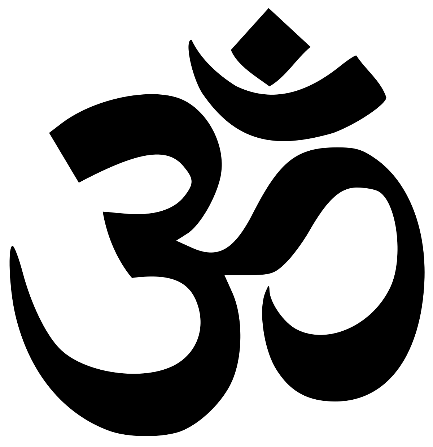
Om is the symbol of creation, the most important one to symbolize Hinduism.
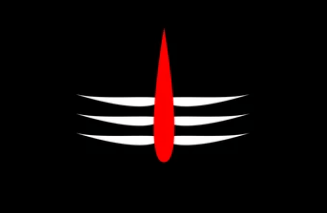
Shivling symbolizes the god Shiva and is revered as an emblem of generative power
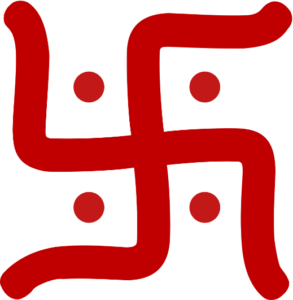
Swastika symbolizes Surya (sun), prosperity, and good luck.
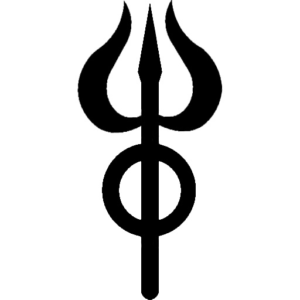
Trishul represents the 3 aspects of consciousness – waking, dreaming, and sleeping, and it represents the 3 gunas- satva, rajas, and tamas. Holding a Trishul (Trident) signifies that Shiva (the divinity) is above all the 3 states, yet is the upholder of these 3 states.
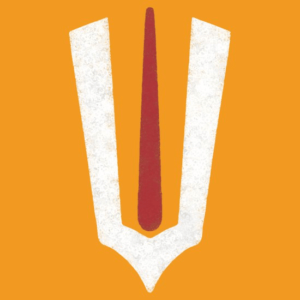
Vaishnava Symbol has 2 lines representing Sri Vishnu’s feet with a red line in the middle representing Lakshmidevi
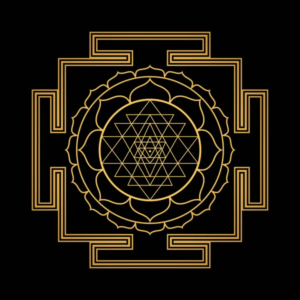
The Shri Yantra symbol is made up of 9 overlapping triangles that encircle the Bindu. The Masculine or Shiva is represented by 4 of these triangles that are upright. 5 of the inverted triangles represent Shakti or the Feminine. The 9 triangles are interlaced to create 43 smaller triangles, which together form a web that represents the universe as a whole or a womb that represents creation. They represent Advaita or non-duality when combined. A lotus with eight petals, a lotus with sixteen petals, and an earth square resemble a temple with four doorways surrounding it.
Holy Color
It is the color of Saffron because it is believed as auspicious in Hinduism.

Holy Materials & Rituals
Ghee, Sandalwood, Saffron, Vermillion, Mint plant leaves, Uptan, and Turmeric are considered sacred by Hindus. They often pray with these kinds of stuff and fire. Devotional music, songs, and dances are also performed by devotes in temples for Gods.
Making symbols with vermillion or sandalwood on the forehead is considered sacred. Also wearing a thread on the hands or hips is a known ritual. Married women put vermillion in the middle of the head, wear Sakha (special bangles made of Conch), and chain on the neck (Called Mangal Sutra). But these rituals are different by region.
Depending on sub-castes, Hindus are divided into vegetarians and non-vegetarians. Usually, Hindus do not consume beef, because, for them, Cow is a form of a Goddess, named Kamdhenu (A mystical cow that comes from a mythological tale of Samudra Manthan). She gives milk, and from that sacred element, Ghee is prepared which is used in venerations.
Hindus marry by encircling 7 times around holy fire, by taking oath as husband and wife. There is also a naming ceremony, called Namkaran, and a first-time feeding ceremony, called Annaprasan, for newborn babies.
Hindus immolate the dead bodies. The place is called Shamshan. They believe the fire is sacred, which takes the remaining of a dead person to the next life. The fruit of a special tree is used to make a sacred necklace for chanting, it’s called Rudraksha.
Luni-Solar Calendar
The calculation of months in such a Luni-Solar calendar is the same as in the lunar calendar. Usually, each year is 12 months long. But every third year an additional month is added, it is called Purusattam or Mal Mash.
With that additional month, a year is completed in 13 months then. In this way, they reconcile the lunar year and the solar year. Because the lunar year has 354 days and the solar year has 365 days, in every 3rd year there are 33 extra days, which are filled by the month of Mal mash.
Every month has two parts, Krishna Paksha (From Full moon to New moon), and Suklo Paksha (From New moon to Full Moon). Every Paksha has 15 days each called Tithi. During the 11th Tithi (Called Ekadashi) Hindus are prescribed to fast and eat only non-cooked foods.
They perform their venerations at Dawn, Noon, and Dusk. Steel Bells and Conches in temples are used manually to call devotes into the temples for veneration of Gods.
In some places, the lunar month starts with Full Moon, but most start with New Moon. They give different names and importance to 12 full moons in 12 months.
-
Poushi Purnima
-
Maghi Purnima
-
Dolpurnima/ Gaur Purnima (Falgun)
-
Chaitra Purnima
-
Buddha Purnima (Baishakh)
-
Jaishti Purnima
-
Guru Poornima (Ashadha)
-
Narali Purnima/ Rakhi Purnima (Shravan)
-
Madhu Purnima (Bhadra)
-
Kojagari Purnima/ Sharad Purnima (Ashwin)
-
Ras Purnima (Kartik)
-
Agrahayana Purnima
Marriage or any kind of veneration is done as per auspicious moments of the Hindu Calendar, depending on each person’s Kundali (An individual book of chart calculated from every person’s birth moment, which depends on the Sun, Moon, Planets, and Stars positions in the sky)



